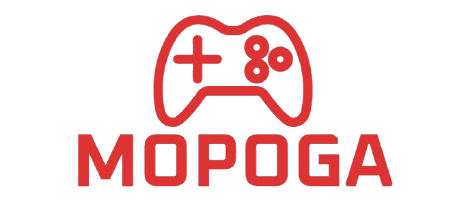Blog
Why You Should Use Chainlist with MetaMask (And How to Do It) – Chainlist Metamask Techedubyte Breakdown

Adding new blockchain networks to MetaMask used to be a pain. You’d spend 20 minutes hunting down RPC URLs, chain IDs, and currency symbols just to connect to one network. Then you’d mess up the details and wonder why your transactions weren’t going through.
That’s where Chainlist comes in. It’s a simple tool that adds networks to your MetaMask wallet in seconds, not minutes. But there’s more to it than just convenience.
What Is Chainlist and Why Does It Matter?
Chainlist is a free website that stores accurate network information for hundreds of blockchain networks. Instead of manually typing in complex technical details, you connect your MetaMask wallet to Chainlist and add networks with one click.
Think of it like having a phone book for blockchain networks. Instead of remembering every network’s technical details, you just look them up and connect instantly.
Problem Chainlist Solves
Prior to Chainlist, connecting a new blockchain network to MetaMask required a manual, often frustrating process that included:
- Tracking down the right RPC URL—often from questionable or unofficial websites that couldn’t always be trusted.
- Getting the exact chain ID number
- Making sure the currency symbol matched
- Double-checking everything because one wrong character breaks everything
I’ve seen people spend an hour trying to connect to Polygon because they copied the wrong RPC URL from a random forum post. That’s frustrating and completely unnecessary now.
Why Use Chainlist Instead of Manual Network Setup
1. You Get Accurate Information Every Time
The most significant risk with manual setup is using the wrong network details. I’ve helped dozens of people who couldn’t figure out why their MetaMask wasn’t working, only to find they’d entered incorrect information.
Chainlist eliminates this problem. The network details are verified and updated regularly. You don’t have to worry about typos or outdated information.
2. It Saves Real Time
If you know what you’re doing, adding a network manually takes 5-10 minutes. With Chainlist, it takes 30 seconds.
Those saved minutes matter when using a new DeFi protocol or minting an NFT. You can focus on what you want instead of wrestling with wallet settings.
3. No More Research Required
Without Chainlist, you’d need to:
- Visit the blockchain’s official website
- Find their developer documentation
- Hunt for the network parameters
- Hope they’re up to date
With Chainlist, all that research has already been done for you.
4. Built-in Security Features
Chainlist shows you essential security information about each network, including:
- Whether the network is the mainnet or the testnet
- If it’s an official network or a fork
- Risk warnings for experimental networks
This helps you avoid connecting to malicious or experimental networks by accident.
Easily Add Blockchain Networks to MetaMask Using Chainlist
Step 1: Open the Chainlist Website
Start by visiting chainlist.wtf in your browser. While the domain name might look odd, rest assured—it’s a well-known and trusted resource in the crypto space.
Step 2: Link Your MetaMask Wallet
Click on the “Connect Wallet” button at the top of the page. When prompted, choose MetaMask.
MetaMask will ask for connection approval. Click “Next”, then “Connect” to proceed. Once successful, your wallet address will show up on the site.
Step 3: Search for the Desired Network
Use the search bar to locate the network you want to add. You can search using:
- The network’s name (e.g., “Polygon” or “Binance Smart Chain”)
- Chain ID
- Token symbol
- The search is intuitive—typing abbreviations like “BSC” will still bring up Binance Smart Chain.
Step 4: Add the Network to MetaMask
When the results show your desired network, click the “Add to MetaMask” button.
MetaMask will open a window showing the network’s details, including:
- Network name
- RPC endpoint
- Chain ID
- Native token symbol
- Block explorer URL
- Check the information, then click “Approve” to add it to your wallet.
Step 5: Switch to the New Network
After approval, MetaMask will ask if you’d like to switch to the new network immediately. Click “Switch network” if you’re ready to use it.
You can toggle between networks later via the dropdown menu at the top of your MetaMask interface.
Common Networks You Should Add (And Why)
Polygon (MATIC)
Polygon is the first alternative network most people add. It offers:
- Much lower transaction fees than Ethereum
- Faster transaction speeds
- Access to popular DeFi protocols like Aave and QuickSwap
Real-world example: Sending USDC on Ethereum might cost $20 in gas fees. The same transaction on Polygon costs less than $0.01.
Binance Smart Chain (BSC)
BSC is popular for:
- Very low transaction fees
- Large selection of DeFi protocols
- Easy access to Binance exchange features
Many yield farming opportunities are exclusive to BSC, making it worth adding even if you primarily use Ethereum.
Arbitrum
Arbitrum is an Ethereum Layer 2 solution that provides:
- Lower fees than mainnet Ethereum
- Full compatibility with Ethereum dApps
- Strong security backed by Ethereum
If you use Uniswap or other Ethereum DeFi protocols regularly, Arbitrum can save you significant money on gas fees.
Optimism
Similar to Arbitrum, Optimism offers:
- Reduced transaction costs
- Fast transaction processing
- Growing ecosystem of native protocols
Optimism has been gaining traction with several major DeFi protocols launching there first.
Troubleshooting Common Chainlist Issues
MetaMask Won’t Connect to Chainlist
If the connection fails:
- Make sure MetaMask is unlocked
- Refresh the Chainlist page
- Clear your browser cache
- Try using an incognito/private browser window
Sometimes browser extensions conflict with wallet connections. An incognito window eliminates this issue.
Network Won’t Add to MetaMask
If clicking “Add to MetaMask” doesn’t work:
- Check if the network is already added (look in your MetaMask network list)
- Double-check that Chainlist is linked to the right MetaMask account
- If the auto-add fails, manually input the network using the info provided on Chainlist
Wrong Network Details
If you notice incorrect information on Chainlist:
- Double-check against the blockchain’s official documentation
- Report the issue on Chainlist’s GitHub page
- Use manual setup with correct details until Chainlist is updated
Security Best Practices When Using Chainlist
Always Verify Network Details
Even though Chainlist is generally reliable, take a quick look at the network details before approving. Check that:
- The network name matches what you expect
- The currency symbol is correct
- The RPC URL looks legitimate (usually includes the network name)
Be Careful with Test Networks
Chainlist includes both mainnet and testnet networks. Testnets are for development and experimentation – don’t send real money there.
Look for indicators like “Testnet” in the network name or warnings on the Chainlist page.
Don’t Add Every Network
Just because you can add a network doesn’t mean you should. Only add networks you plan to use. Extra networks clutter your MetaMask interface and increase the chance of sending funds to the wrong place.
Keep Your MetaMask Updated
Chainlist works best with current versions of MetaMask. Update your wallet regularly to avoid compatibility issues.
Alternative Ways to Add Networks (When Chainlist Isn’t Enough)
Manual Network Addition
There may be times when a network isn’t listed on Chainlist. In that case, you can add it manually like this:
- Open MetaMask and click the network dropdown
- Select “Add Network” at the bottom
- Choose “Add a network manually.”
- Enter the network information as listed in the blockchain’s official resources or documentation.
- Save the network
Using DeFi Protocol Prompts
Many DeFi protocols automatically prompt you to add their network when you try to use them. It’s a handy feature, but always double-check that the information aligns with the official network sources.
Browser Extension Tools
Some browser extensions help manage multiple networks, but Chainlist remains the most popular and trusted option.
Benefits Beyond Just Adding Networks
Network Discovery
Chainlist helps you discover new blockchain networks you might not have known about. Browsing the list can introduce you to emerging ecosystems with unique opportunities.
Staying Updated
Network parameters sometimes change. RPC endpoints go down, new ones come online, or chain IDs get updated. Chainlist keeps track of these changes so you don’t have to.
Community Verification
The networks on Chainlist are community-verified. If there’s an issue with a network’s details, the community typically reports and fixes it quickly.
What to Do After Adding Networks
Test with Small Amounts First
When you first connect to a new network, send a small test transaction before moving significant funds. This confirms everything is working correctly.
Find Native Tokens
Most networks have their native token for paying gas fees. Make sure you have some before trying to make transactions:
- Polygon needs MATIC
- BSC needs BNB
- Arbitrum needs ETH
- Optimism needs ETH
Discover Network-Specific dApps
Each network has its ecosystem of decentralized applications. Spend time exploring what’s available on your newly added networks.
Chainlist vs Other Network Management Tools
Why Chainlist Wins
Compared to other tools, Chainlist offers:
- Completely free to use
- No registration required
- Regularly updated information
- Simple, clean interface
- Wide network coverage
Limitations to Know About
Chainlist isn’t perfect:
- Sometimes lags behind new network launches
- Doesn’t provide detailed network analytics
- Limited to basic network addition (no advanced features)
For most users, these limitations don’t matter. The core functionality works excellently.
Common Beginner Mistakes
From helping new users, here are the most common mistakes I see:
- Adding networks they don’t need – Keep it simple and only add what you’ll use
- Forgetting to get native tokens – You need the network’s native token to pay gas fees
- Not testing first – Always test with small amounts before moving significant funds
- Using the wrong networks – Double-check you’re on the right network before transacting
Future of Network Management
What’s Coming
Network management is getting easier. Expect to see:
- Automatic network switching based on the dApp you’re using
- Better integration between wallets and network databases
- Improved security warnings for risky networks
Chainlist’s Role
As the blockchain space expands, tools like Chainlist are becoming increasingly essential.
Making the Most of Multi-Chain DeFi
Portfolio Strategy
Using multiple networks effectively requires a strategy:
- Keep 60-70% of funds on your primary network (usually Ethereum)
- Maintain smaller positions on alternative networks for specific opportunities
- Always keep some native tokens for gas fees on each network
Tracking Your Assets
With assets spread across multiple networks, tracking becomes essential:
- Use portfolio trackers that support multiple chains
- Keep a simple spreadsheet of your positions
- Check all networks when calculating your total portfolio value
Tax Considerations
Remember that transactions on all networks count for tax purposes. Keep records of:
- Cross-chain transfers
- DeFi interactions on each network
- Gas fees paid in different tokens
Final Thoughts
Chainlist removes the guesswork, hassle, and risk from adding networks to MetaMask. What used to be a frustrating manual process is now as simple as a few clicks—accurate, fast, and beginner-friendly. Whether you’re a DeFi veteran managing assets across chains or just starting to explore alternatives to Ethereum, Chainlist ensures you connect confidently. As the crypto world moves toward a multi-chain future, having a reliable network manager like Chainlist isn’t just helpful—it’s essential.
